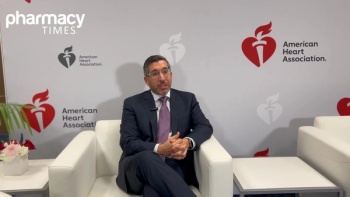About the Author
Lisa E. Davis, PharmD, FCCP, BCPS, BCOP, is the editor in chief of Pharmacy Practice in Focus: Oncology. Davis holds positions as a clinical pharmacist in early-phase clinical trial and breast cancer programs at the University of Arizona Cancer Center in Tucson and as a clinical professor of pharmacy practice and science at the University of Arizona R. Ken Coit College of Pharmacy. Davis also sits on the Hematology/Oncology Pharmacy Association Board of Directors and is a member of the Cancer Prevention and Control Program and scientific review committee at the University of Arizona Cancer Center.
The campaign for National Stress Awareness Month in April is under way, bringing attention to the negative impact of stress and advocating for strategies to better manage stress as essential components of mental and physical well-being. Health care professionals work in stressful environments and, if not experiencing and/or dealing with stressful situations themselves, are interacting with patients and coworkers who are. Although the stress response—elicited through interconnected neuroendocrine, autonomic/metabolic, and immune systems—is central to survival, constant and/or repeated activation is detrimental to physical and psychological health.
The effects of stress on physical disorders, heart disease, stroke, and mental health, among others, are well recognized, as are practical tips to combat stress and mitigate these effects, which we can readily access through professional organizations, the CDC, and numerous public resources. However, as individuals, we need to embrace these strategies that enable us to improve how we respond and adapt to stress, which is much easier to rationalize than operationalize. Many health professionals find that this humbling self-awareness promotes greater understanding of and empathy for our patients as we advise them regarding the importance of this endeavor.
One of the recommendations that can be challenging in advising patients with active cancer is that of incorporating regular exercise into their daily lives. The impact of regular physical activity in reducing one’s cancer risk has been established. What may be less effectively conveyed are data supporting how a physically active lifestyle is associated with improved outcomes for cancer survivors, as is ongoing active therapy in the case of certain cancers. Notably, patients will be more successful and supported in these efforts through structured exercise interventions and support programs. Without this additional support, it may be difficult for patients experiencing fatigue and other symptoms associated with active cancer treatments to initiate a new physical activity program or maintain a regular one.
Our perceptions of the types and levels of physical exercise that confer potential beneficial outcomes can be expanded upon. For example, investigators who assessed vigorous intermittent lifestyle physical activity (VILPA) in self-reported non-exercising adults reported an association with a reduced incidence of PA-related cancer. In this prospective study of 22,398 participants followed up for a mean of 6.7 years, published in July 2023 in JAMA Oncology, a minimum of about 3.5 minutes of VILPA daily reduced total incident cancer risk by 17% to 18% compared with no VILPA. Interestingly, greater than 90% of VILPA was accrued in sessions of up to 1 minute in duration. Participant activity was measured using wrist accelerometry recorders— feasible but beyond what could be captured using exercise diaries or common smartwatches. Confounding factors, such as sex, age, body mass index, lifestyle factors (eg, smoking, alcohol use, etc) and established cardiovascular risk factors were accounted for in the analyses. Thus, duration of daily VILPA was inversely associated with a reduced risk in incident and PA-related cancer risk, requiring only 4 to 5 minutes of VILPA daily to reduce cancer risk.1
With these data, a strategy of implementing VILPA may help to improve outcomes for cancer survivors and/or patients undergoing active anticancer therapy. What remains unclear is whether daily periods of VILPA will also help improve outcomes beyond cancer risk, such as stress and stress-related complications. For patients and health care professionals, implementing VILPA could be a much-needed answer to ongoing daily stress. To this end, health care professionals may similarly benefit from structured exercise interventions and support programs, as it can be difficult to overcome the daily inertia of a busy work schedule, which paradoxically may feel both incredibly active and sedentary. Again, humbling self-awareness may be a valuable tool while progressing toward the goal of a less stressful, quotidian life.
Reference
Stamatakis E, Ahmadi MN, Friedenreich CM, et al. Vigorous intermittent lifestyle physical activity and cancer incidence among nonexercising adults: the UK Biobank Accelerometry Study. JAMA Oncol. 2023;9(9):1255-1259. doi:10.1001/jamaoncol.2023.1830
















































































































































































































